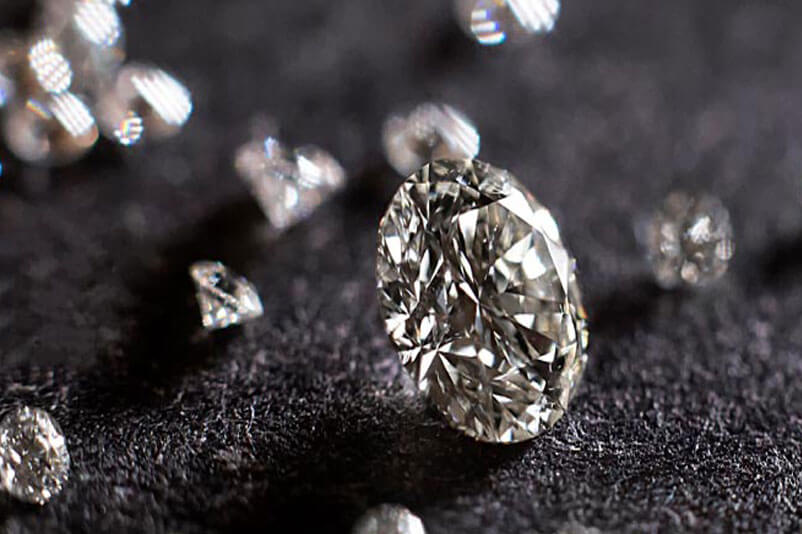Natural diamonds have long been regarded as symbols of luxury, love, and wealth. They have held a special place in the world of fine jewelry and high-end investments, with many individuals considering them valuable assets. However, in recent years, there has been growing concern over the viability of natural diamonds as an investment. Despite their historical allure, there are several reasons why natural diamonds might not be the best choice for those looking to secure long-term financial gains.
1. Lack of Liquidity
One of the most significant issues with investing in natural diamonds is the lack of liquidity. Unlike stocks, bonds, or real estate, diamonds are not easily traded on public markets. The resale value of a diamond is determined by a variety of factors, including its size, cut, color, and clarity, as well as market demand. Finding a buyer can be difficult, especially for specific types of diamonds, and prices can fluctuate based on market conditions and the rarity of the stone.
While diamante naturales mala inversion may hold their value over time, their resale value is rarely predictable, and selling a diamond often involves hefty transaction costs, including broker fees, auction house commissions, and sometimes even insurance premiums.
2. The Declining Market for Natural Diamonds
The global market for diamonds has changed significantly over the years, and it is no longer the exclusive domain of the wealthy. In particular, lab-grown diamonds—synthetic diamonds that are virtually identical to natural ones in terms of appearance and chemical composition—have gained considerable traction in the market. These diamonds are produced in controlled environments, and because they are much cheaper to produce, they have created an increasing level of competition for natural diamonds.
As consumer demand for ethical and sustainable products grows, lab-grown diamonds have emerged as an attractive alternative. Unlike mined diamonds, which can have a significant environmental and social impact, lab-grown diamonds offer a more sustainable and affordable option. This shift is likely to affect the demand for natural diamonds, particularly in the luxury market, and could lead to decreased resale values over time.
3. Price Volatility and Market Manipulation
The diamond industry has been historically marked by price volatility, and the market for natural diamonds has been subject to manipulation by a few major players. Companies like De Beers, which has dominated the diamond industry for decades, have historically controlled the supply of diamonds, creating an artificial scarcity to keep prices high. While the diamond market is more diversified now, it still remains relatively opaque compared to other markets.
The lack of transparency and regulation in the diamond market means that prices can fluctuate wildly. A diamond’s value is not always based on its intrinsic qualities alone but is also heavily influenced by market trends and corporate strategies. As a result, investors in natural diamonds are left vulnerable to market manipulation, which can distort pricing and leave them with an asset that is worth far less than anticipated.
4. High Markups and Overvaluation
Diamonds often come with substantial markups, especially when purchased from jewelers or luxury retailers. A diamond that is sold as a “high-end” or rare stone may be marked up by as much as 100% or more compared to its wholesale price. In fact, many diamonds are overvalued at retail prices, which makes them an inefficient investment vehicle.
Additionally, the price of natural diamonds is often influenced by fashion trends, marketing efforts, and other external factors, which means that their perceived value is not always aligned with their actual worth. This can make it difficult for investors to accurately assess the long-term financial potential of their diamond investments.
Looking for more better diamonds? Schedule a free site visit with Novita Diamonds today! Our experts will bring a curated selection of stunning diamonds directly to you, offering personalized guidance and exclusive deals. No hidden fees, just a more better experience. Visit novitadiamonds.es to book your consultation now!
5. High Costs of Ownership
In addition to the initial high cost of purchasing a natural diamond, there are other ongoing expenses associated with ownership. For example, diamonds require regular maintenance, including cleaning, re-setting, and possible repairs. Insurance premiums can also be high, lab grown diamonds, especially if the diamond is valuable. These added costs reduce the overall return on investment, particularly when compared to more straightforward investment options like stocks or real estate.
6. Ethical and Environmental Concerns
In recent years, there has been growing concern over the ethical and environmental implications of diamond mining. Natural diamonds are often sourced from regions with questionable labor practices and environmental damage. For those who prioritize sustainability and ethical investments, supporting an industry that has been linked to human rights violations and ecological destruction may not align with their values.
While initiatives like the Kimberley Process have been put in place to ensure diamonds are conflict-free, they have not completely eliminated the issues surrounding unethical sourcing. As consumers become more aware of these problems, there is a shift toward lab-grown diamonds, which are seen as more ethical and sustainable.
Conclusion
While natural diamonds may still have a place as a luxury item or a symbol of personal achievement, they are not necessarily a sound investment. The lack of liquidity, price volatility, competition from lab-grown diamonds, and high costs associated with ownership all contribute to their shortcomings as an investment vehicle. As the market for natural diamonds continues to evolve, investors looking for stable, long-term financial returns may want to explore other options that offer better transparency, lower risk, and more predictable outcomes.
In summary, natural diamonds may not be the financial windfall they were once thought to be, and investing in them could ultimately prove to be a poor decision for those seeking to build lasting wealth.




